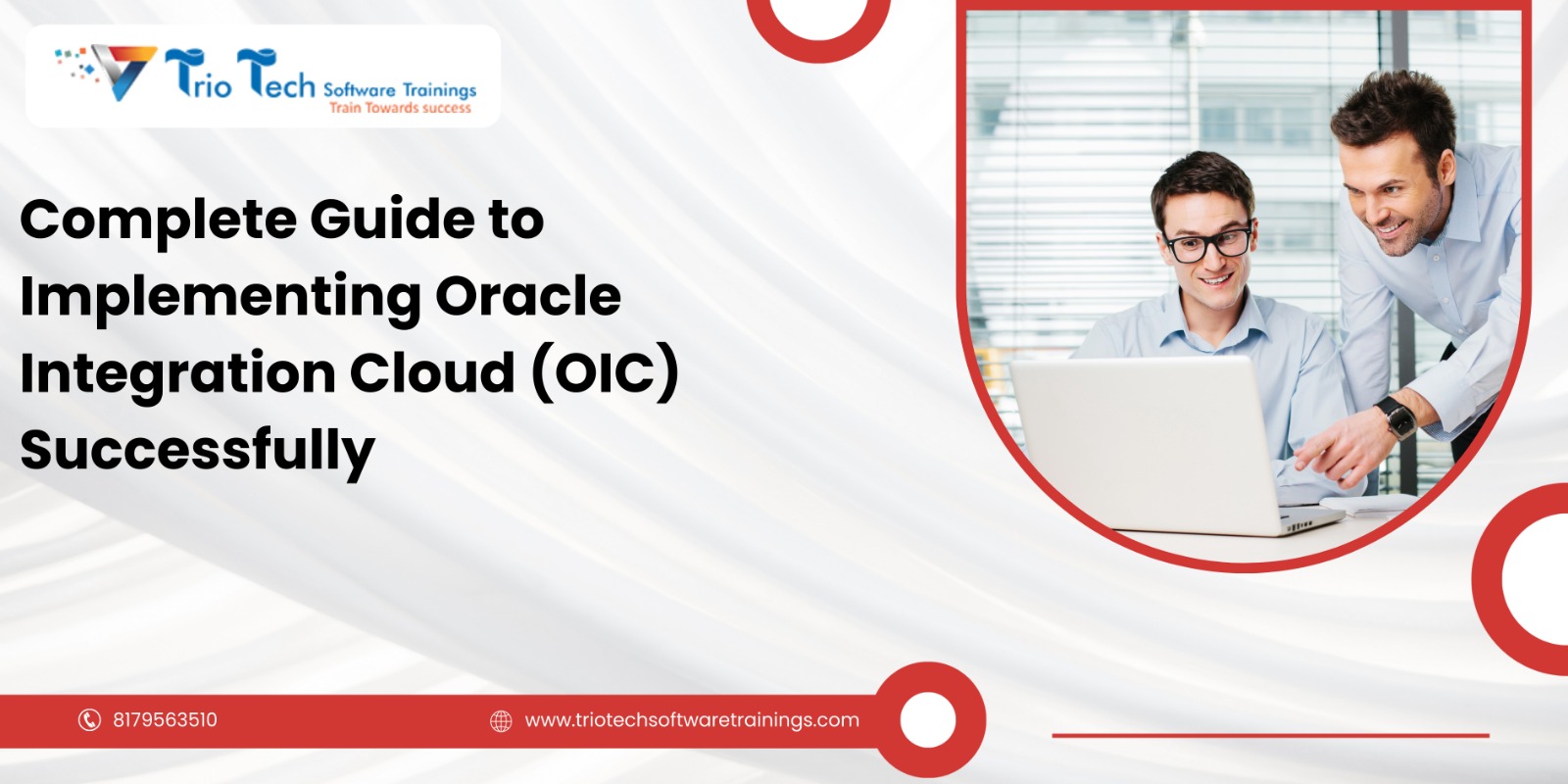Introduction
Enterprises today run on multiple applications—Oracle ERP Cloud, HCM Cloud, SCM, Salesforce, and more. Each system is powerful, but their real value shines when they integrate seamlessly. The challenge? Integration is often complex and time-consuming.
This is where Oracle Integration Cloud (OIC) makes the difference. OIC connects applications, automates workflows, and ensures smooth data exchange across critical business processes.
For IT professionals looking to build a high-demand career, enrolling in an Oracle Technical OIC Course in Hyderabad at Triotech Software Trainings is a smart choice. In this blog, we’ll explore the step-by-step OIC implementation process, real-world use cases, and why Hyderabad is the ideal destination to master OIC.
Step 1: Define Integration Requirements
Every successful OIC implementation starts with clear goals. Key questions include:
- Which applications should be connected?
- What type of data will be exchanged?
- Should the integration be real-time or scheduled?
- What compliance or security standards must be met?
Example: A company may want to sync payroll data from Oracle HCM Cloud with ledgers in ERP Cloud—a case where secure, real-time integration is critical.
Step 2: Set Up the OIC Environment
Next, prepare the foundation for integration:
- Provision and activate your OIC instance.
- Assign roles such as ServiceAdministrator or ServiceDeveloper.
- Configure security policies for encrypted communication.
- Use the Connectivity Agent for hybrid (cloud + on-premises) systems.
A well-prepared environment ensures smooth integration.
Step 3: Create Connections
Connections form the backbone of OIC. With pre-built adapters, you can connect to:
- Oracle ERP Cloud
- Oracle HCM Cloud
- Oracle SCM Cloud
- Salesforce
- Workday
- SAP
- REST/SOAP APIs
💡 Example: Syncing HR data with ERP requires creating two secure, reusable connections—one for HCM and one for ERP.
Step 4: Design Integrations
With OIC’s drag-and-drop designer, you can build:
- App-Driven Orchestrations – Triggered by application events.
- Scheduled Integrations – Run at specific intervals.
- File-Based Integrations – Handle batch uploads.
During design, you:
- Map source fields to target fields
- Apply business rules and transformations
- Configure advanced error handling
💡 Example: “Employee ID” in HCM may need transformation into “Worker Reference” for ERP.
Step 5: Test the Integrations
Testing prevents costly errors. OIC allows you to:
- Test payloads in real-time
- Validate field mappings
- Simulate workflows
- Catch integration failures early
Cover both positive test cases (expected workflows) and negative test cases (invalid input, downtime).
Step 6: Deploy and Monitor
Once tested, integrations move to production. OIC provides:
- Dashboards to track workflows
- Alerts for failed integrations
- Audit logs for traceability
- Metrics for performance optimization
💡 Example: If payroll sync from HCM to ERP fails, OIC immediately alerts administrators.
Step 7: Optimize and Scale
As businesses grow, integrations must evolve. OIC supports:
- Adding new systems and flows
- Enhancing transformation rules
- Automating recovery from failures
- Scaling for larger data volumes
This adaptability makes OIC a future-ready integration solution.
Real-World Applications of OIC
- HR & Payroll Automation – Sync Oracle HCM employee data with ERP payroll.
- Customer 360 View – Merge Salesforce CRM and Oracle ERP for unified visibility.
- Supply Chain Automation – Connect Oracle SCM with logistics for faster delivery.
- Financial Consolidation – Combine multi-entity data in Oracle Financials for accurate reporting.
Benefits of Learning OIC
For professionals, mastering OIC is a career accelerator:
- High Demand – OIC experts are sought after by MNCs and consultancies.
- Attractive Salaries – Oracle Cloud specialists earn above-average pay.
- Career Growth – Leads to roles like Cloud Integration Developer or Consultant.
- Future-Ready Skills – OIC expertise is essential in automation and digital transformation.
👉 By joining an Oracle Technical OIC Course in Hyderabad, you gain real-world expertise that makes you job-ready.
Why Hyderabad is the Best Place for OIC Training
Hyderabad is India’s Oracle Cloud hub with unmatched advantages:
- Home to leading IT firms and Oracle partners hiring OIC experts.
- Certified trainers offering real-time, project-based learning.
- Affordable training with global-level quality.
- A strong Oracle professional community for networking.
Choosing an Oracle Technical OIC Course in Hyderabad at Triotech Software Trainings ensures you not only learn but also build connections for future opportunities.
Conclusion
Oracle Integration Cloud (OIC) simplifies the challenge of connecting enterprise applications. From planning to deployment and monitoring, Oracle Integration Cloud ensures seamless, secure, and scalable integration.
For IT professionals, OIC is more than a tool—it’s a pathway to a high-growth career. By enrolling in an Oracle Technical OIC Course in Hyderabad at Triotech Software Trainings, you gain hands-on expertise, industry exposure, and a clear edge in the cloud integration job market.
🚀 Ready to transform your career? Learn OIC today and step confidently into the future of enterprise technology.
